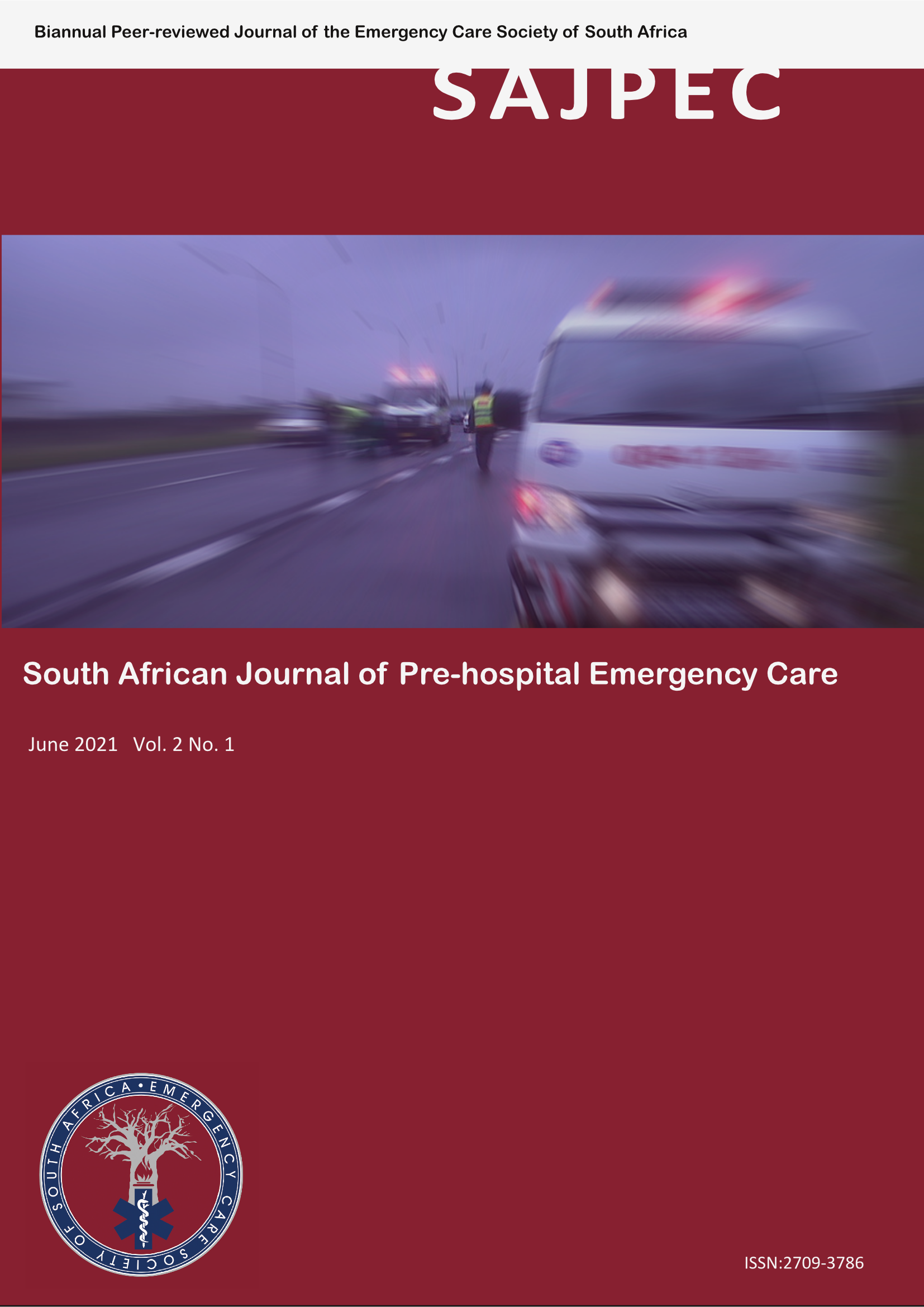Medication storage in Emergency Medical Services: Temperature ranges from a South African sample
DOI:
https://doi.org/10.24213/2-1-4480Abstract
Background: Pre-hospital emergency care providers working in emergency medical services (EMS) are licenced to administer medication to the acutely ill and injured. In South Africa, there are significant seasonal variations in temperature, sometimes far exceeding the recommended medication storage temperature. The aim of this study was to determine the summer temperature ranges inside select emergency vehicles and storage facilities in four provinces in South Africa.
Methods: A prospective, observational study was conducted in four (Cape Town, Western Cape; Johannesburg, Gauteng; Durban, KwaZulu-Natal; Potchefstroom, North West) provinces during the summer (February – March) months of 2019. A continuous temperature monitoring device was placed in the medication storage room, the response vehicle drug bags, and an ambulance at a single private EMS base in each of the provinces. Temperature data were recorded in fifteen-minute intervals. The data were extracted after six weeks and subjected to descriptive analysis. Data were also analysed in six-hourly strata to account for daily temperature variations.
Results: A total of 36 002 temperature readings were recorded during the study period. The mean (range) temperature across the four bases was 25.4°C (13.1–56.8) for ambulances, 25.7°C (13.3–49.1) for primary response vehicles, and 24.4°C (17.3–33.9) for medication storage facilities. The highest mean (range) temperatures, of 33.7°C (20.4–47.9), were recorded in a Johannesburg-based primary response vehicle between 12h00 and 18h00.
Conclusion: Current medication storing and transporting practices not maintain temperatures according to the recommended storage conditions. Further investigation should address the implication of temperature fluctuations on medication degradation, and a sustainable, cost-effective solution should be developed to store medication in the pre-hospital setting.
Downloads
References
Van De Vaart FJ. Good pharmacy practice. Pharm Weekbl [Internet]. 1996;131(42):1206. Available from: https://www.pharmcouncil.co.za/Media/Default/Documents/Rules published in terms of section 35A of the Pharmacy Act 53 of 1974.pdf
Temperatures M, Africa S. Extremes of temperatures (1950 – 2000). 2004;1–15.
Stein C. Medication storage temperatures in primary response vehicles. South African Med J. 2008;98(7):535–6.
Stein C, Caetano E. Transportation of blood in a helicopter emergency medical service: The importance of specialised equipment. South African J Crit Care. 2016;32(2):62–3.
Helm M, Castner T, Lampl L. Environmental temperature stress on drugs in prehospital emergency medical service. Acta Anaesthesiol Scand. 2003;47(4):425–9.
Armenian P, Campagne D, Stroh G, Ives Tallman C, Zeng WZD, Lin T, et al. Hot and Cold Drugs: National Park Service Medication Stability at the Extremes of Temperature. Prehospital Emerg Care. 2017;21(3):378–85.
Rudland S V, Jacobs AG, Devon S, Gjacobs A, Surgery B, Ex D. GENERAL PRACTICE Visiting bags : a labile thermal environment. 1994;308:954–6.
Tree B. Crēdo ProMedTM [Internet]. Available from: https://www.boundtree.com/Equipment-Bags/Trauma-Bags/Crdo-ProMed-Thermally-Protected-Medical-Transporters/p/group005046
Downloads
Published
Issue
Section
License
Authors grant the Emergency Care Society of South Africa the exclusive right to publish, display, reproduce and/or distribute the work in print and electronic format and in any medium known or hereafter developed, including for commercial use. Authors also agree that the Emergency Care Society of South Africa may retain in print or electronic format more than one copy of the work for the purpose of preservation, security and back-up.


